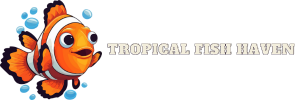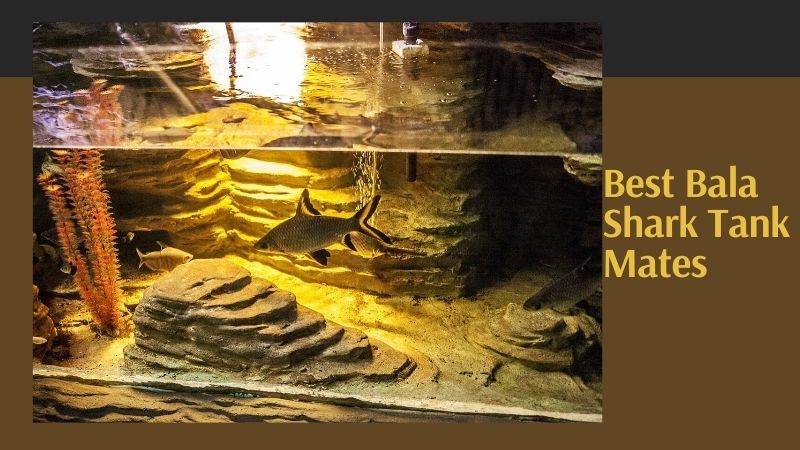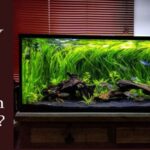Bala Sharks (Balantiocheilos melanopterus) are popular freshwater fish known for their striking appearance and peaceful demeanor. With their sleek, streamlined bodies and distinctive black-tipped fins, they make a captivating addition to community aquariums. However, due to their potential size—growing up to 14 inches—and their natural schooling behavior, selecting appropriate tank mates for Bala Sharks is crucial for creating a harmonious aquatic environment. In the following article, Tropical Fish Haven will delve deeper into the bala shark tank mates.
Best Bala Shark Tank Mates
Tinfoil Barbs (Barbus schwanefeldi)
Tinfoil barbs are another strikingly reflective silver fish, similar to the Bala shark. They feature a laterally compressed body and a notably deep chest, with fins accented by a stunning bright red hue.
- Minimum Tank Size: 150 gallons (568 liters)
- Temperature: 75°-80°F (24°-27°C)
- Care Level: Medium
- Diet: Omnivore
- Behavior: Peaceful, but very active schooling fish
- Group Size: Should be kept in groups of five or more
- Size: Up to 13 inches (33 centimeters)
Boesemani Rainbowfish (Melanotaenia boesemani)
Boesemani Rainbowfish are absolutely stunning, featuring thick bodies, deep chests, and relatively small heads. The front half of their bodies showcases a vivid blue color, while their tails are bright yellow, making them a visual delight in any aquarium.
- Minimum Tank Size: 40 gallons (151 liters)
- Temperature: 78°-82°F (25°-28°C)
- Care Level: Easy
- Diet: Omnivore
- Behavior: Active, peaceful shoaling fish
- Group Size: Should be kept in groups of five or more
- Size: Up to 4 inches (10 centimeters)
Emerald Rainbowfish (Glossolepis wanamensis)
Emerald Rainbowfish are characterized by their pointy heads and distinctive back, which arches sharply from behind the skull before tapering down to the tail. Their scales exhibit a striking metallic emerald green color, complemented by reddish hues on the belly and fins.
- Minimum Tank Size: 40 gallons (151 liters)
- Temperature: 75°-82°F (24°-28°C)
- Care Level: Easy
- Diet: Omnivore
- Behavior: Active, peaceful shoaling fish
- Group Size: Should be kept in groups of five or more
- Size: Up to 4 inches (10 centimeters)
Clown Loaches (Chromobotia macracanthus)
Clown Loaches have the characteristic body shape of all botia loaches, featuring a sharply pointed nose, prominent mouth barbels (whiskers), an elongated body with a flat stomach, and a deeply forked tail. When young, these fish are bright orange with three black stripes along their bodies. As they mature, the orange color becomes muted and the stripes fade to dark brown.
- Minimum Tank Size: 120 gallons (454 liters)
- Temperature: 79°-82°F (26°-28°C)
- Care Level: Easy
- Diet: Omnivore
- Behavior: Active, peaceful schooling bottom feeder
- Group Size: Should be kept in groups of eight or more
- Size: Up to 12 inches (30 centimeters)
Angelfish (Pterophyllum sp.)
Angelfish are known for their distinctive laterally compressed bodies, which allow them to navigate easily through dense vegetation. They are iconic for their long, flowing fins extending from both the top and bottom of their bodies. Angelfish come in a wide range of colors and patterns, making them a visually appealing addition to any aquarium.
- Minimum Tank Size: 40 gallons (151 liters)
- Temperature: 75°-85°F (24°-29°C)
- Care Level: Medium
- Diet: Carnivore
- Behavior: Loosely shoaling fish that prefers dense plants
- Group Size: Ideally kept as singles or pairs
- Size: Up to 8 inches (20 centimeters)
Black Ghost Knifefish (Apteronotus albifrons)
The Black Ghost Knifefish is one of the most distinctive fish in the aquarium hobby. Its body is a deep blue-black color, accented by two small white bands on its rod-like tail. This species features a single undulating fin running along its underside that spans the entire length of its body, with no dorsal fins present.
- Minimum Tank Size: 150 gallons (568 liters)
- Temperature: 73°-80°F (23°-27°C)
- Care Level: Advanced
- Diet: Carnivore
- Behavior: Solitary, nocturnal cave-dwelling fish
- Group Size: Only one per tank
- Size: Up to 18 inches (46 centimeters)
Swordtails (Xiphophorus hellerii)
Swordtails feature a body with a deep chest that tapers slightly towards the tail. They possess a high dorsal fin, and males are distinguished by the characteristic “sword” on their tails, which is an elongated ray of their caudal fins.
- Minimum Tank Size: 30 gallons (113 liters)
- Temperature: 65°-85°F (18°-29°C)
- Care Level: Easy
- Diet: Omnivore
- Behavior: Very active livebearers that may not school together but are highly social
- Group Size: Should be kept in groups of two females for every male
- Size: 5.5-6 inches (14-15 centimeters)
Blood-Red Parrot Cichlid
The Blood-Red Parrot Cichlid typically displays shades of orange, yellow, or red. This species features a bulbous head with a downward-curving nose that resembles a parrot’s beak, which is the origin of its name. They have large eyes and a rounded body, making them a notably heavy-bodied fish with triangular tails.
- Minimum Tank Size: 55 gallons (208 liters)
- Temperature: 76°-80°F (24°-27°C)
- Care Level: Easy
- Diet: Omnivore
- Behavior: Very active fish that may not school together but are highly social
- Group Size: As many as your tank can accommodate
- Size: Up to 8 inches (20 centimeters)
Plecos (Family Loricariidae)
Plecos come in various species, each displaying different colorations, but they all share a similar body shape. They have a large head with a blunt nose and a prominent suckermouth, tapering down to a triangular tail.
These fish often feature large, sail-like dorsal fins and are covered in armored scales. Their bodies are flattened along the belly, allowing them to easily cling to the bottom or any surface while feeding.
- Minimum Tank Size: 55 gallons (208 liters)
- Temperature: 75°-82°F (24°-28°C)
- Care Level: Easy
- Diet: Herbivore
- Behavior: Shy, cave-dwelling bottom feeders
- Group Size: Best kept as singles
- Size: Varies by species, ranging from 3 to 18 inches (7.5 to 46 centimeters)
Temperament: Will Bala Sharks Eat Other Fish?
Despite growing quite large, Bala Sharks are generally gentle and timid fish. They lack the aggressive temperament necessary to compete with more assertive species, such as most African cichlids.
It’s important to keep Bala Sharks in a school of five or more, as they thrive in groups and feel more secure when surrounded by their own kind.
If kept in insufficient numbers, they may exhibit some aggression due to feelings of vulnerability, leading them to become nippy.
To ensure their well-being, maintain a large enough group to help them feel safe and secure.
conclusion
Choosing the right tank mates for Bala Sharks is vital for fostering a peaceful and healthy aquarium. These gentle giants thrive in groups and benefit from the presence of compatible species that share similar temperaments and environmental needs. When selecting tank mates, it’s essential to consider the size, behavior, and social structure of potential companions. By creating a balanced and diverse community tank, fish keepers can enhance the overall experience for both their Bala Sharks and their other aquatic residents. With careful planning and consideration, a well-maintained aquarium can become a stunning showcase of beauty and harmony in the underwater world.





